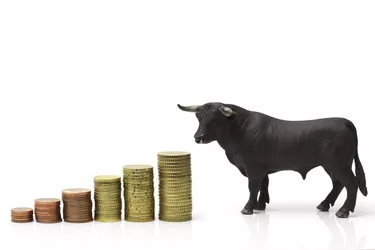
While some investors choose to add only value stocks to their portfolio, others focus mainly on growth stocks. Each type of stock offers rewards and risks. An investor who wants to compare growth stocks with value stocks needs to become familiar with the criteria analysts use to categorize stocks to see which type best fits his portfolio and risk tolerance.
Characteristics of Growth Stocks
Video of the Day
When investors categorize a company's stock as a growth stock, one common characteristic is that the company tends to reinvest earnings. This means the company chooses to launch new projects, acquire a competitor or expand in some other way instead of distributing earnings to investors in the form of dividends. The stock of an emerging company may be classified as a growth stock because the company shows potential to produce significant earnings. However, newer companies cannot offer investors a track record to analyze and therefore may pose higher risk.
Video of the Day
Value Stock Characteristics
Securities characterized as value stocks tend to sell at much lower prices than those of comparable companies within the same sector. Value stocks may include those of older, established companies and newly formed entities that haven't attracted significant investor interest. A value stock may have been affected by recent internal events in the company but still post stable financials and a solid earnings history.
The P/E Ratio
One statistic commonly used to classify value and growth stocks is the price-to-earnings, or P/E, ratio. This ratio provides investors with information on the value of a stock. It is figured by dividing current earnings per share, or EPS, into the current market price of the stock. For example, if a stock is selling at $50 per share and the earnings for the previous year were $2 per share, the stock's P/E ratio would be 25. Value stocks tend to have lower P/E ratios than the stock of comparable companies in related industries, whereas growth stocks tend to have higher P/E ratios than comparable stocks.
Price-to-Book Ratio
Investors use the price-to-book, or P/B, ratio to locate what they hope is undervalued stock. This statistic is calculated by dividing the current book price per share into the current market price per share. Growth stocks tend to have higher price-to-book ratios, and value stocks tend to have lower price-to-book ratios. Comparing one stock with another using P/B ratios can be misleading, as the P/B ratios of companies vary by industry.